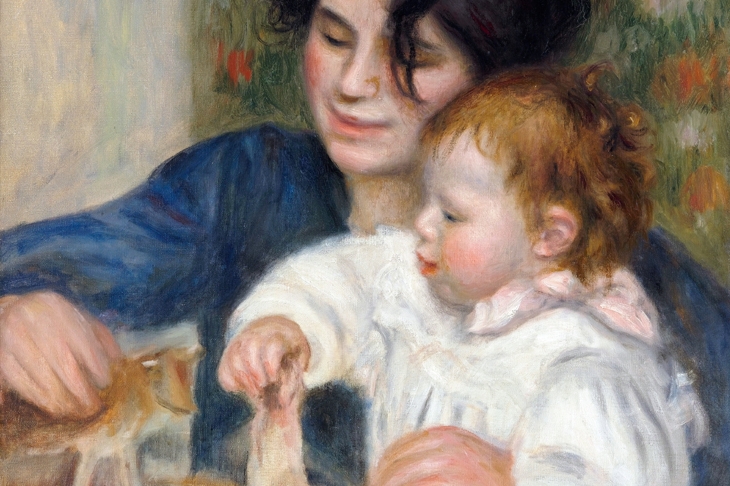In 1959 the formidable interviewer John Freeman took the Face to Face crew to the 81-year-old Augustus John’s studio. The beetling brow, piercing eye and a succession of roll-ups stuck to his lower lip offer almost a caricature of the undimmed rascality of the old devil. Like all the films in that remarkable series, it offers a glimpse into a world that we thought television was invented too late to record. But how much more extraordinary it is to watch, in a three-minute film made in 1915, another elderly artist — the 74-year-old Pierre-Auguste Renoir, crippled with arthritis, working at his easel. The externals are similar — the beard, the arty getup, the cigarette — but even in this silent film Renoir’s chatty urbanity speaks volumes about a man built in a very different vein.
Renoir was the only one of the great Impressionist painters to come from truly humble origins — his father was a tailor and his mother a seamstress — and he entered art school after an apprenticeship painting figures and flowers on porcelain and decorative schemes on window blinds. For most of his fellow artists the struggle was for recognition of their artistic innovation — the vibrant portrayal of light and reflected light in short, brightly coloured brush strokes. For Renoir the struggle was also a financial one, and, according to Barbara Ehrlich White, the struggle of the outsider to swim in a social world where he was out of his depth.
To this cause she attributes his anxiety, nervous tics, inability to make decisions and fear of confrontation. To Pissarro he was ‘that most inconsistent of men’, and in trawling through some 3,000 of Renoir’s letters, White has attempted to chart his inconsistent life in an exhaustive study that stands as a companion piece to her earlier Renoir: His Life, Art and Letters.








Comments
Join the debate for just £1 a month
Be part of the conversation with other Spectator readers by getting your first three months for £3.
UNLOCK ACCESS Just £1 a monthAlready a subscriber? Log in